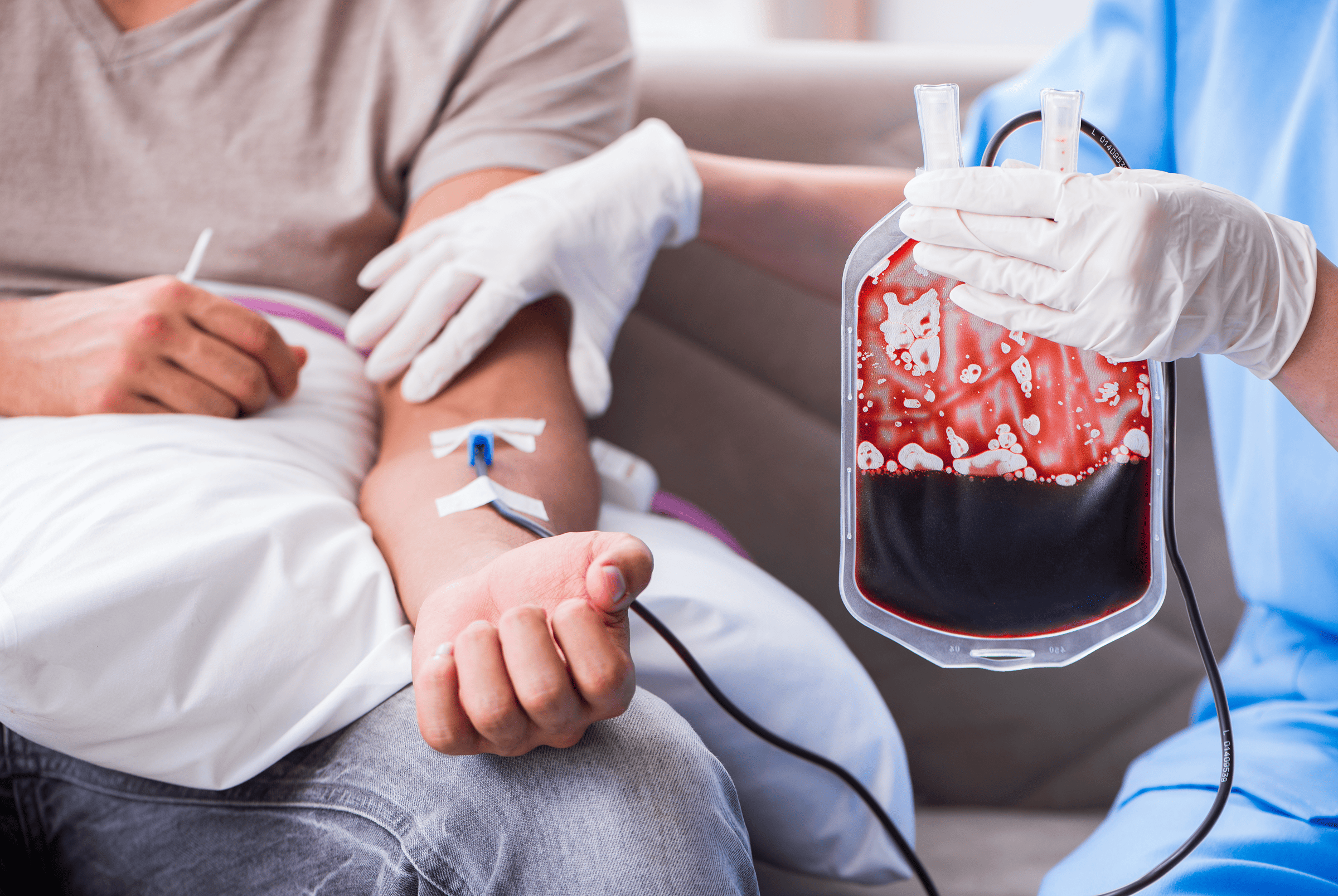
- The Definition of What Is a Nursing Diagnosis
- How to Write a Nursing Diagnosis
- How to Write Nursing Diagnosis: Components
- Nursing Diagnosis Examples
- Risk for Nursing Diagnosis
- Why Is It Important to Identify Risks for Nursing Diagnosis?
- So How to Write a Risk for Nursing Diagnosis?
- Nursing Diagnosis Format
- Types of Nursing Diagnosis
- How to Prioritize Nursing Diagnosis
- How to Write a Nursing Diagnosis Statement
Nursing diagnoses are a way of grouping symptoms and findings together and making a diagnosis. You may have heard of them and may wonder what they are and what they mean. This article will discuss what nursing diagnosis terms and categories are and how to make a nursing diagnosis correctly, including specific considerations such as nursing diagnosis for asthma.
The Definition of What Is a Nursing Diagnosis
Let’s start with answering the question, what is a nursing diagnosis? It is a statement that indicates a specific client’s problem or need. It is based on an assessment of the client’s health status. Nursing diagnoses are classified according to the client’s needs and can be based on the ethical dilemma in nursing. The categories include physical health, mental health, psychosocial health, medical conditions, and pregnancy complications. The client’s history and the nursing assessment are used to determine nursing diagnosis.
Nursing diagnosis guides the development of a plan of care that is individualized according to the client’s specific needs. They can also be used as a baseline to evaluate the effectiveness of interventions aimed at reducing identified risks or increasing factors associated with wellness.
How to Write a Nursing Diagnosis
There are five nursing diagnoses: Problem-focused diagnosis, Risk diagnosis, Health Promotion diagnosis, and Syndrome diagnosis. Each nursing diagnosis needs to contain certain information. Get more useful details on how to write nursing diagnosis in our Q+A section.

So, how to do a nursing diagnosis? The following are the general guidelines for each nursing diagnosis:
Problem-focused diagnosis: it is used when there is an identified problem or need that requires a solution. It should include identifying symptoms or risks and how they impact the patient’s health status. Examples: Delirium, weight loss, and pain.
Risk diagnosis: this nursing diagnosis is used when an identified risk to the patient’s health needs to be monitored or managed. It should include identifying risk factors and how they impact the patient’s health status. Examples: Age > 65 years old, smoking status, history of cancer.
Health promotion diagnosis: this diagnosis is used when there are no specific problems or risks which need to be identified or monitored, but rather it identifies a goal for improving the patient’s overall health. It should include the identified goals and how they will be achieved. Examples: Increase physical activity levels, reduce stress, and increase nutrition.
Syndrome diagnosis: this nursing diagnosis is used when there is an identified collection of symptoms and their underlying cause that requires a treatment plan. It should include the identified syndrome, its cause, and how it affects the patient’s health status. Examples: Acute cholecystitis (acute inflammation of the gallbladder), Alzheimer’s disease (AD)-related cognitive decline.
How to Write Nursing Diagnosis: Components
Three major components make up a nursing diagnosis:
Which problems need to be treated first? It allows nurses to prioritize their patient’s needs. For example, if a patient has severe pain and confusion, the nurse may treat it first since it is more critical than the patient’s mental health. The “Identifier” allows nurses to communicate with each other about sick people and their care in an effective manner.
What factors may have contributed to the identified problems in a nursing diagnosis? It helps nurses understand why the patient is experiencing certain symptoms after what they can create effective treatment plans. For example, if a patient has a wound on their arm that is not healing well and the nurse suspects it may be due to an infection, they can work with doctors to treat it. The “Contributor” allows nurses to focus on what needs to be treated for patients to improve.
Planning treatment options based on the symptoms and contributing factors. This enables nurses to develop plans according to a nursing diagnosis to help them address their patients’ health problems. For example, if a patient is experiencing severe pain and confusion, the nurse may choose to use medications that treat both of these symptoms. The “Goal” allows nurses to identify what they are trying to accomplish with their patients’ care.
Nursing Diagnosis Examples
A nursing statement indicates a patient’s specific problem, condition, or disease. It’s based on the sickness’ signs and symptoms and used to help plan the patient’s care.
Proper nursing diagnosis examples might include the following:
- “Pulmonary hypoplasia-related breathing patterns are ineffective and characterized by intermittent subcostal, abdominal breathing, tachypnea, and the need for continuous oxygen support.”
- “Poor airway clearance due to gastroesophageal reflux as shown by retching, congestion in the upper airway, and continuous coughing.”
- “Airway inflammation and bronchoconstriction due to asthma as evidenced by exacerbating symptoms such as wheezing, coughing, and chest tightness.”
Get more ideas by exploring diagnosis essays examples from our database. You definitely find something helpful there among hundreds of good samples carefully ordered by subject and topic.
Risk for Nursing Diagnosis
Risk for nursing diagnosis is any event, circumstance, or symptom which requires your intervention as an RN to prevent further health problems or promote better health outcomes for your patient. In other words, a risk for nursing diagnosis is anything that affects your patient’s physical, mental, or social well-being.
Why Is It Important to Identify Risks for Nursing Diagnosis?
Nursing diagnosis is used in the nursing process to guide your interventions and inform your decisions about patient care. How can you provide effective care if you don’t know what is affecting your patient’s health? To provide quality healthcare and make sound clinical judgments, nurses must identify all risks within any nursing diagnosis that may affect the patient at any time.
So How to Write a Risk for Nursing Diagnosis?
When writing a risk for nursing diagnosis, it is important to be specific and provide enough detail so that the assessment can be completed by other healthcare professionals who may not have had an opportunity to examine the patient. Here are some tips for writing a risk for nursing diagnosis:
– Include all the details about your patient’s current health status for the right diagnosis. For example, describe any symptoms or events that led to this particular situation. Be as specific as possible. You want others to understand what has happened without having to interview the patient or their family members.
– Include any previous medical history that may be relevant. This includes other health conditions, surgeries, and any medications being taken before hospital admission.
– Describe any physical examination findings, including vital signs and diagnostic tests performed. If you had access to these exams, include them here as well.
– List abnormal diagnostic test results, such as lab values or imaging reports.
– List any abnormal physical findings such as wounds, scars, or other obvious signs of trauma.
Nursing Diagnosis Format
Nursing diagnosis is a process nurses use to identify and treat patients with health problems. The nursing diagnosis format differs from other formats because it includes a comprehensive assessment of the patient’s physical, mental, and social needs. Nursing diagnosis is a tool used to organize a vast amount of patient data for nurses to identify the most beneficial treatment. The process begins with identifying symptoms and continues through evaluation, planning, implementation, and review.
Types of Nursing Diagnosis
When diagnosing a nursing patient, it is important to be familiar with the different nursing diagnoses. Knowing how to write a nursing diagnosis comprehensively describes the patient’s condition. They can be used to help guide treatment and identify potential needs.
- Acute Care Nursing Diagnoses are used to describe a patient’s condition as it is currently occurring. They are typically used when the patient is experiencing intense symptoms that require close attention and rapid response.
- Preventive Care Nursing Diagnosis helps plan and manage the patient’s overall health. They can help identify potential health risks and recommend interventions to prevent or minimize them.
- Rehabilitation Nursing Diagnoses describe a patient’s condition after an illness or injury. They can help identify any physical, emotional, or functional needs that may have arisen due to the injury or illness.
- Supportive Care Nursing Diagnoses provide emotional support and assistance to patients throughout their illness or injury. In addition, they can help identify any patient’s need for assistance with activities of daily living (ADLs), such as bathing or dressing.

When exploring what is nursing diagnosis, you’ll eventually learn about NANDA International or NANDA-I. It has organized the types of nursing diagnosis into a register called Taxonomy II, which has been used for over 25 years. Taxonomy II is divided into 13 domains, 47 classes, and 267 nursing diagnoses.
- Nutrition
- Familial hypercholesterolemia
- Gaucher disease
- Krabbe disease
- Anemia
- Perception/Cognition
- Mild cognitive impairment
- Attention deficit disorder
- Early onset dementia
- Alzheimer’s disease
- Sexuality
- Human Papillomavirus (HPV)
- Syphilis
- Chlamydia
- Hepatitis
- Safety/Protection
- Dermatitis
- Respiratory illnesses
- Hearing loss
- Physical Injury
- Elimination/Exchange
- Enuresis
- Anaphylaxis
- Dysphagia
How to Prioritize Nursing Diagnosis
Each diagnosis has its defining characteristics and patient needs, so it’s important to make sure you’re picking the right one. When prioritizing nursing diagnosis, it’s important to remember that your patients deserve the best care possible. Therefore, you want to be able to focus on their needs and make sure that you’re using the most effective methods of treatment.
Below, look at the stages of how to prioritize nursing diagnosis.
Start with Patient Needs
First and foremost, you should always start by taking a look at your patient’s medical needs. You should ask yourself the following questions:
“What symptoms does my patient have? What medical conditions are they suffering from?”
Look at Medical History
Next, you should look at your patient’s medical history. If they have a history of nursing diagnosis for schizophrenia, what treatment methods were used to address it earlier? If so, what treatment methods were successful in treating it? This will help you to prioritize nursing diagnoses that will be effective to your patient.
Consider Personal Factors
Another thing to consider is any personal factors that may affect your patient’s treatment needs. For example, when treating a child, their emotional state and level of maturity might be essential to consider when prioritizing nursing diagnosis.
Consider Age and Gender as Well
You should also pay attention to age and gender when prioritizing nursing diagnosis. Some conditions are more common in certain age groups or among particular genders, so it’s important to keep these things in mind when determining treatment needs.
How to Write a Nursing Diagnosis Statement
When a nurse diagnoses a patient, they must be able to accurately and concisely write a nursing diagnosis statement. This statement outlines the patient’s condition and the nurse’s assessment. Nurses should be familiar with the most common nursing diagnoses to accurately and know how to write a nursing diagnosis statement concisely for their patients.
Here is the most common nursing diagnosis.
- Acute pain: The nurse’s assessment of the patient’s physical symptoms and findings may reflect the severity of the patient’s experiences. The nurse may find that the patient has a high fever, is in a lot of pain, or has a bruised leg.
- Fever: A high fever is often a sign of an infection and can signal a more serious health condition. The nurse’s assessment of the patient’s symptoms and findings may help to determine the cause of the fever and any necessary treatments.
- Hypotension: Low blood pressure can indicate several health problems, including heart disease and stroke. The nurse’s assessment of the patient’s symptoms and findings can help to determine the cause of the low blood pressure and any necessary treatments.
- Inactivity: A patient who is inactive due to illness or injury may have several health problems. The nurse’s assessment of the patient’s symptoms and findings can help to determine the cause of the inactivity and any necessary treatments.
- Injury: The nurse’s assessment of the location, severity, and type of injury may help to determine the appropriate treatment. For example, a broken bone may require a different treatment than a sprained ankle.
The nursing diagnosis statement should be specific, accurate, and reflective of the patient’s health condition. By being familiar with the most common nursing diagnoses, nurses can easily write a nursing diagnosis statement that accurately reflects the patient’s health condition.
Suppose you are a nurse practitioner who seeks guidance in learning. In that case, you can read some nursing materials, such as a Nightingale College Guide to Nursing Diagnosis, or apply our services to get professional help from experienced mentors.















































